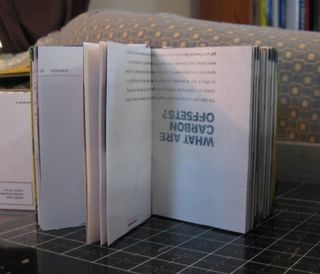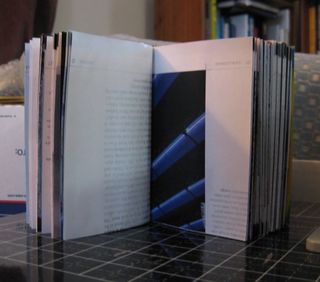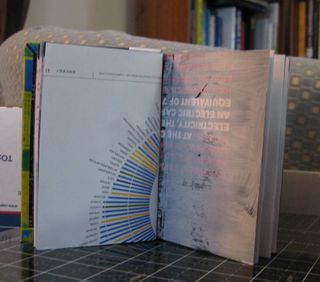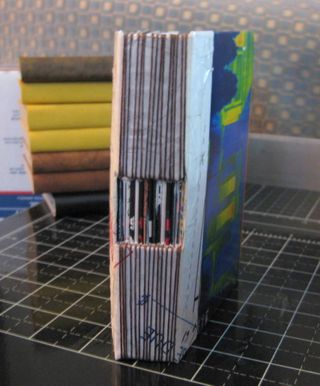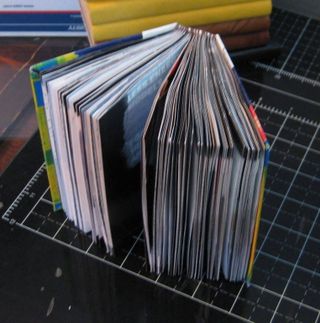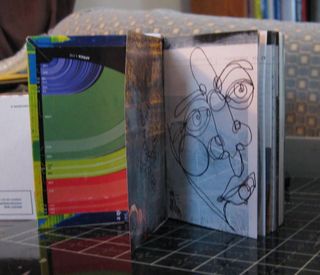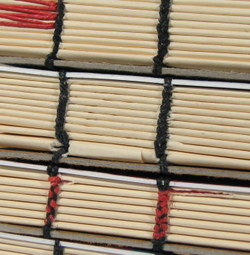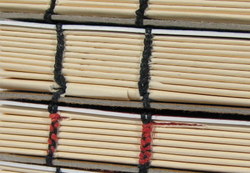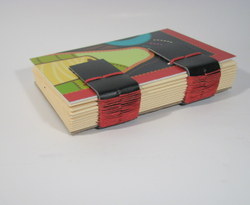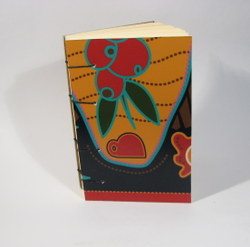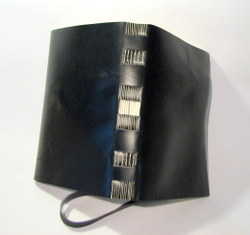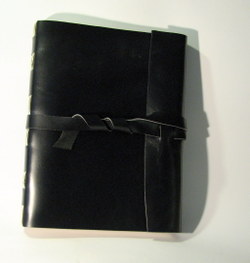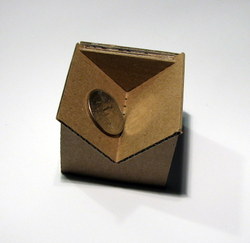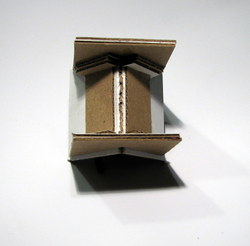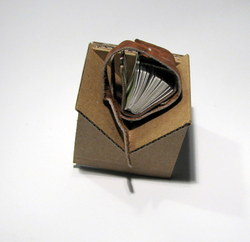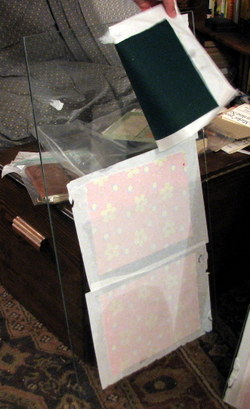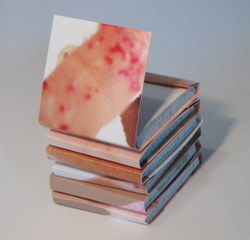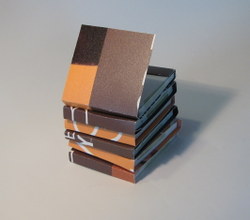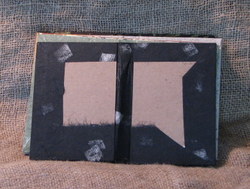I've been working on this idea of some 100% recycled sketchbooks. I've been fascinated for some time with the idea of gesso'd pages made of newspaper or magazines. I first experimented with this idea back in 1999, I gesso'd a hundred or so pages of newspaper and drew on them. I have no idea where those pages went or what ever happened to them. All I know is that I love to draw on gesso, especially when it's on top of chunky paper. The rougher the paper the more i like it. So why would I want to experiment with gesso on magazine apges? Color and pattern. It takes away the fear of the precious white page, the empty the making of the first mark.
The first mark is there just whited out with gesso. I used a thin layer of gesso to cover up the words and images from a national geographic special magazine. I snagged 3 copies from the trash, chopped and stitched it up into a 3.5×5 inch book that is just a hair over 1 inch thick. The binding is a standard button hole style binding. I fouled up the spine a tad, but the spine is made of a recyled tyvek envelope that I had recieved somethign in. The book is about 98% recycled. The book board inside is not recycled and the thread is of course new material, but the rest all recycled.
I digress. I went through the book with brush and gesso and put a thin layer of gesso over images and words. I lightened pages that were too dark to write on. My first intent was to draw in this book with a ultr fine point sharpie or pigma pen. The pages are so slick that thegesso adhere'd well but will still scratch off, which leads to more ideas but wasn't what I had planned on. My initial goal was to use this as a sketchbook and journal. Sketching is easier in this book than writing. Mainly due to that issue witht he gesso scratching off.
I intended for this to be somethign of a prototype of sorts. I wanted to do a limited edition with pre-gessoed pages BUT it took so long to gesso up the 300 pages (all day) that I'd have to charge an exhorbitant amount to sell these and recoup any profits. Anyway, I'm in love with the size and chunkiness of the book and I've been using it a little bit here and there. I am going to make a few one of a kind versions of the book. BUt be aware you'll see some more sketches on here than you have in the past.
